Baja Backroads | Todo Bien EP.02
Hello everyone & welcome back to Episode 2 of Todo Bien!
If you’re looking for more information, tips and recommendations for traveling in Baja head to our Traveling in Baja: The Basics blog post. Enjoy the episode!
With the bomb cyclone pummeling the Pacific Coast, it brought in cold, and wet weather. I’m sure this comes as zero surprise, but when the weather gets bad and we loose access to the outside our world starts to feel really small and confined. Because of that, we try to avoid this kind of weather. With a gloomy looking forecast, we decided to pick up and head over towards to the Sea of Cortez (the water on the other side of Baja) in Bahia de Los Angeles.
Roxanne at camp on the Sea of Cortez, 120mm film
The desert during our drive, 120mm film
Vultures hanging on a cacti over our camp spot
We thankfully found mild weather on the opposing coast. It was a relief to be able to be back outside. It was here that we started to spend a bunch of time admiring the birds of the Baja Coastline. It was impossible not to, they were everywhere. From atop the tall Cardon Cacti vultures would roost for the night much like they are in the image above.
Roxanne looking for a camp spot on the Sea of Cortez
At first we were just seeing vultures, then, once we’d been paying attention long enough we started to see tons of other varieties. It made sitting outside and simply observing such a treat every time we’d see something new.
MAK and Owen enjoying sunset on the Sea of Cortez
While we were here, we were still primarily working on our previous series, A Long Time Coming. Our adventures outside of the truck would primarily happen in the evening after the work of the day was done. Honestly, this is pretty much what our day to day life looks like out on the road. It isn’t glamorous. We wake up, enjoy our morning beverage outside. We return to the camper to focus on whatever work we have and the day is punctuated by tending to our “solar garden”. What we call our deployable solar panel when it’s out and needs to be moved throughout the day.
No matter what, we always stop work for sunset, no matter if a series is being filmed or not. Watching sunset is how we clearly mark the end of the word day. When you work for yourself, it can be hard to know when to stop working for the day. So we let nature tell us when to call it quits for the day.
Views out the window while commuting south
After a few productive and enjoyable day on the Sea of Cortez, we decided we were ready to press further south. We wanted to find some warmer weather and water. For years we had our eye on a small dirt track that heads south out of the Bahia de Los Angeles. We knew that it had, in years past, been included in the International Off Road race called the Baja 1000. We thought it would be a cool way to accomplish our goal of heading south all while taking the scenic route through the Environmentally Protected area of Valle de Los Cirios.
For those who are curious, this is why we decided to get a 4x4 truck and camper combo. This is the type of travel that we felt was inaccessible to us when we were in our van. We wanted to be able to head down dirt roads with confidence that we had what it would take to get there. Every single time we’ve decided to “take the scenic route” on some far flung 4x4 road to commute to a new area, we’ve been handsomely rewarded.
MAK at camp somewhere on the Sea of Cortez
We took us about a week to drive the roughly 250km (160 miles) to make it back to pavement. We were moving very slowly, stopping for anything and everything that seemed interesting to us. There was a lot that we found to be interesting on this stretch of road!
Owen documenting sunset, 120mm film
We stayed at many small and remote beaches. Ironically, we only saw a few bike packers on this route. We later came to understand that its apart of the Baja Divide trail. As always, we stopped to offer water, beer, snacks, whatever we had to offer. We meet a lot of people that way, by sharing what we have. With a whole truck and camper with us at all times, we often have far more supplies on us than backpackers and bikepackers which is why we like to offer. We have been in their position before, and thus it feels good to pay it forward.
An incredible stretch of desert as we made our way south
After only having stayed on the coast thus far in Baja, the road turned inland and took us high into the mountains just as a cold snap set it. With temps below freezing, we settled in for the night at a small working ranch where we showered for the first time in two weeks. The ranch was beautiful and in an entirely different environment that we had yet to enjoy. The Ranch dogs were also a real treat to visit with as well.
Right before we came back out onto Highway 1, we stopped at some pictographs that were recommended to us by some friends.
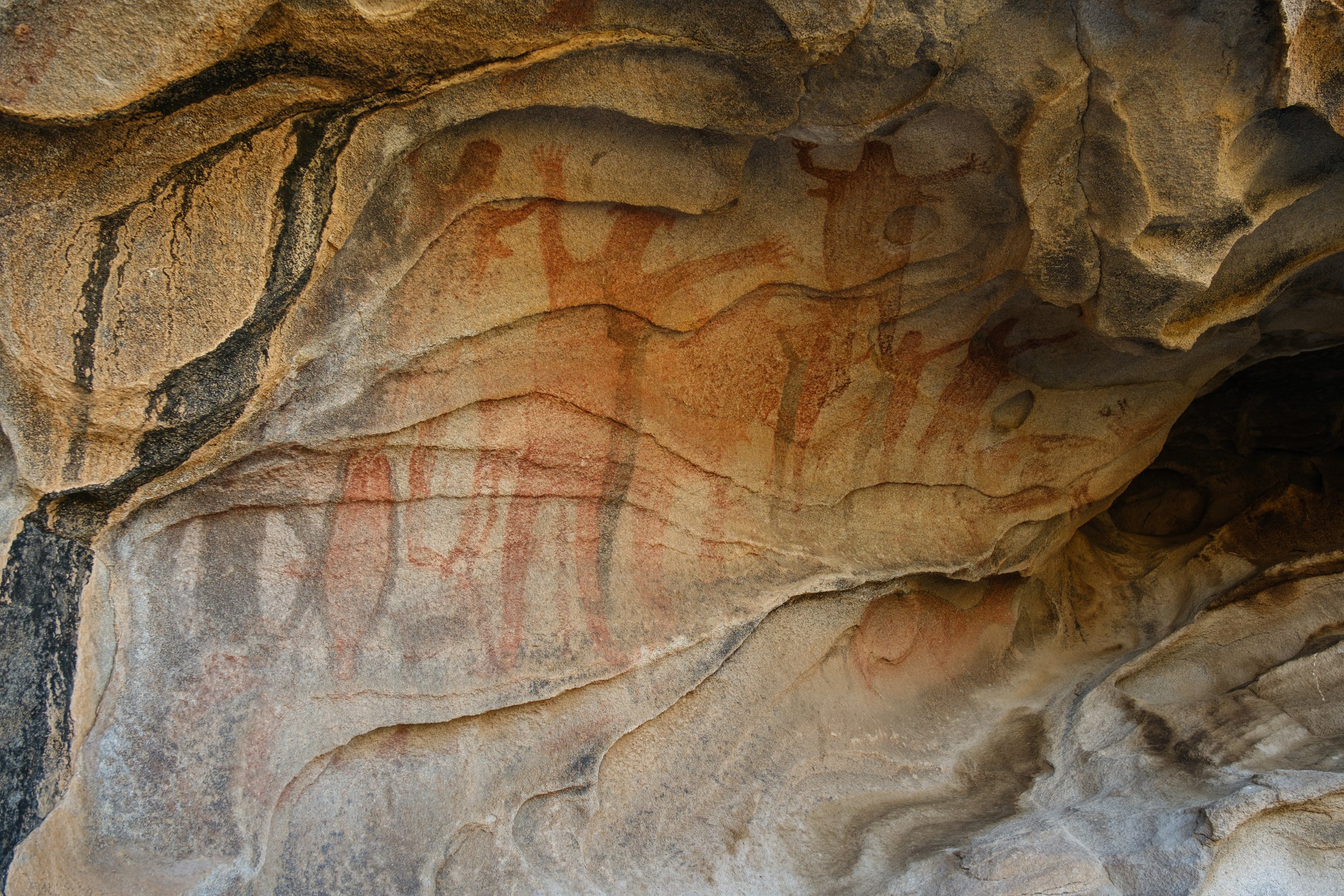
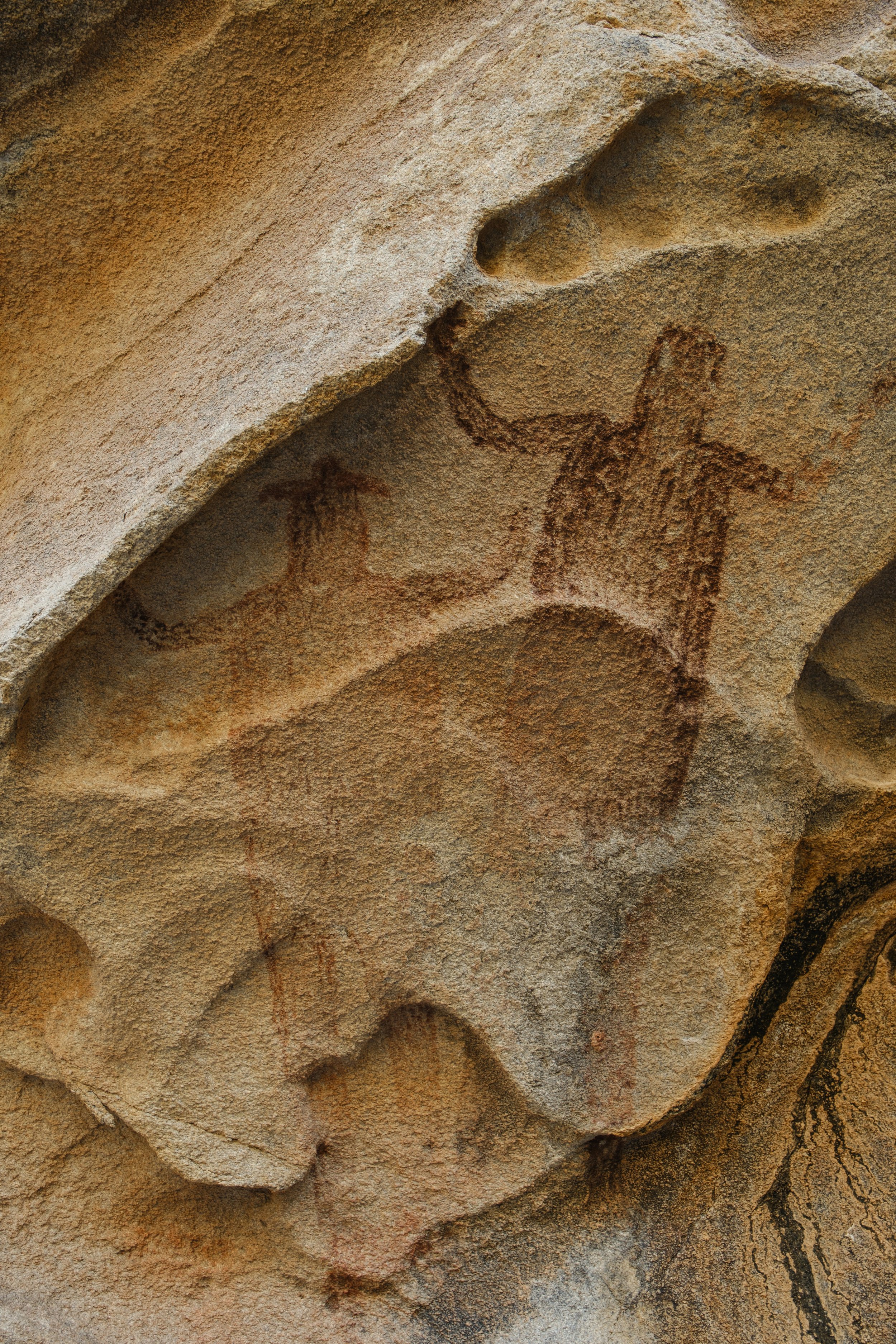
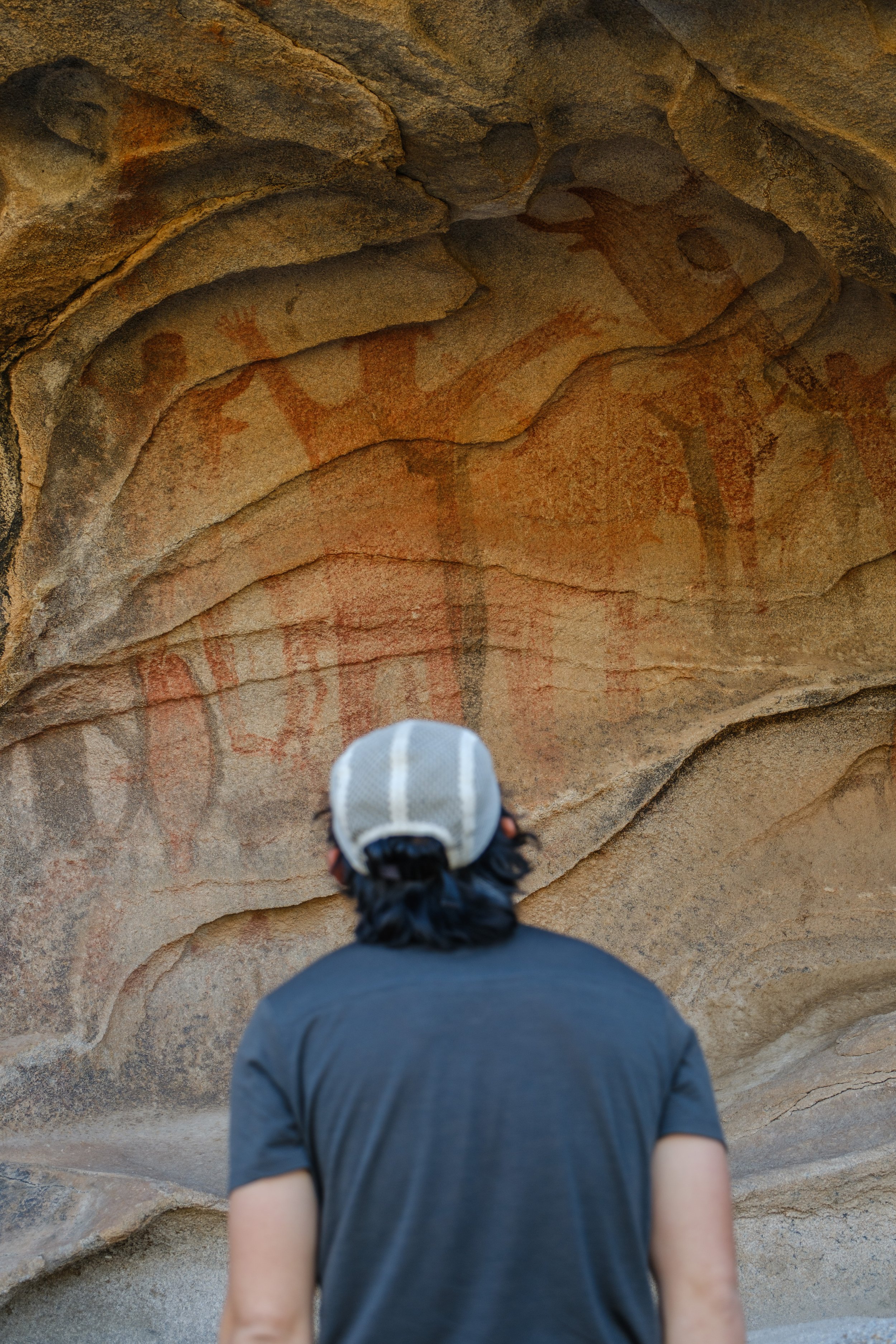
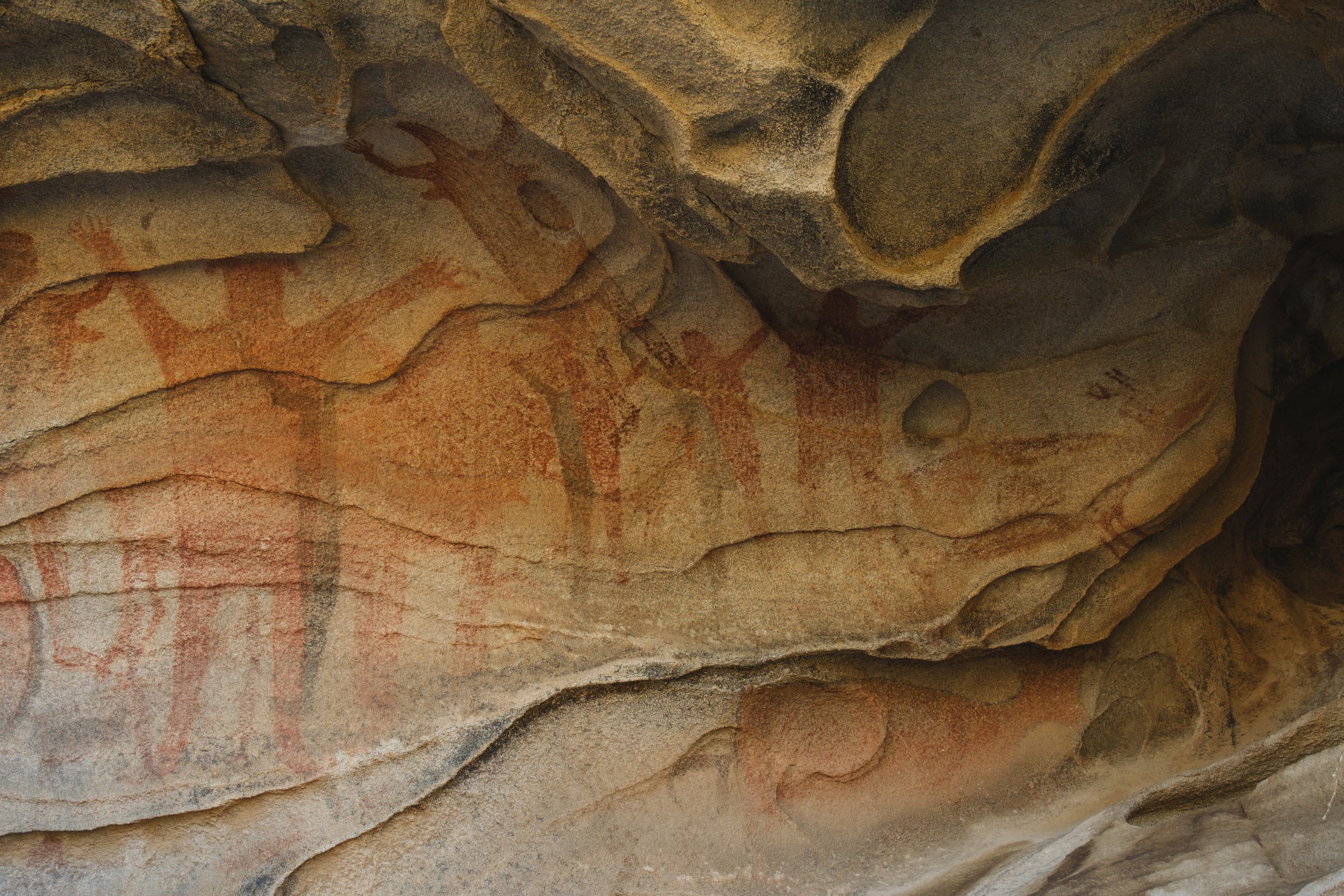
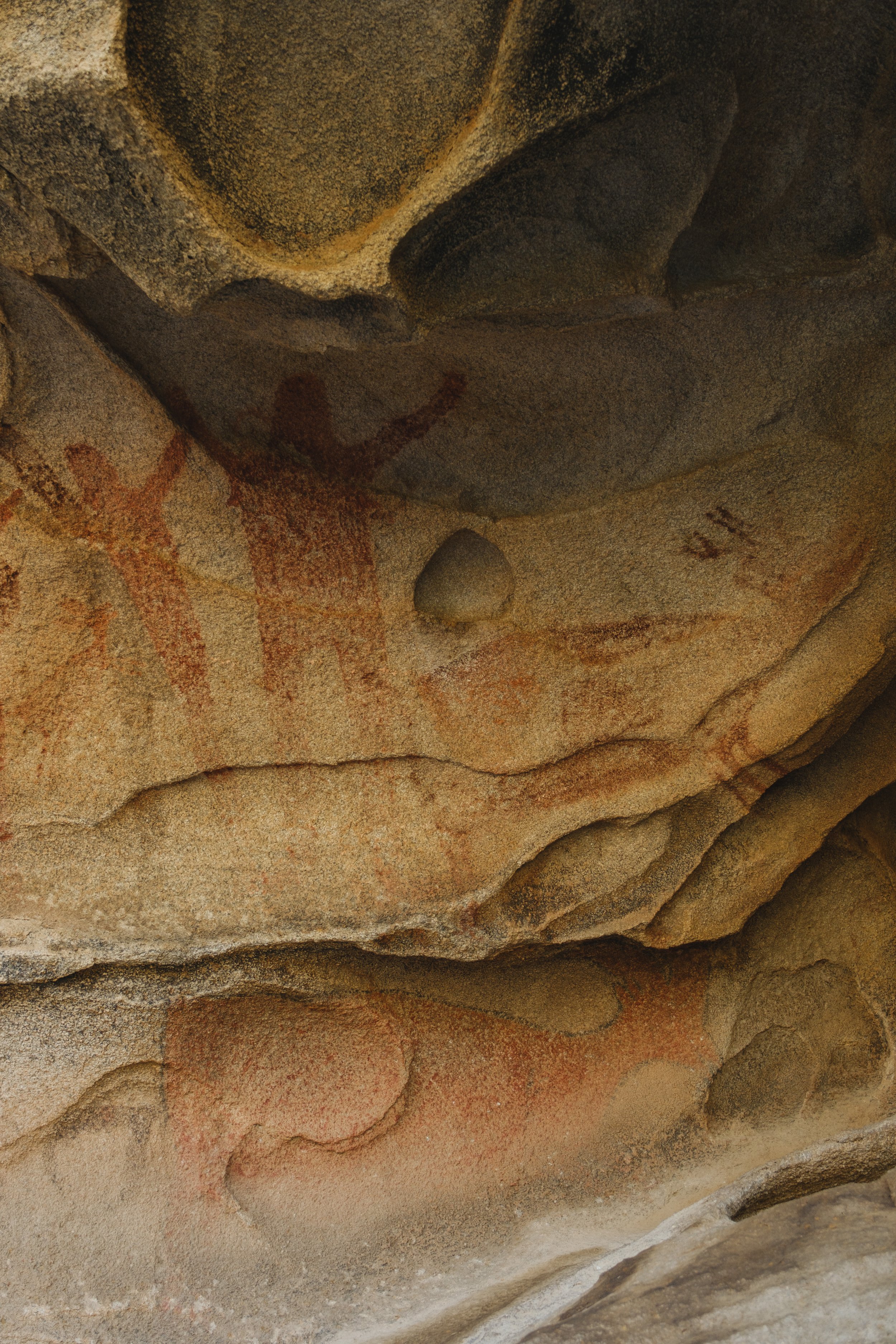
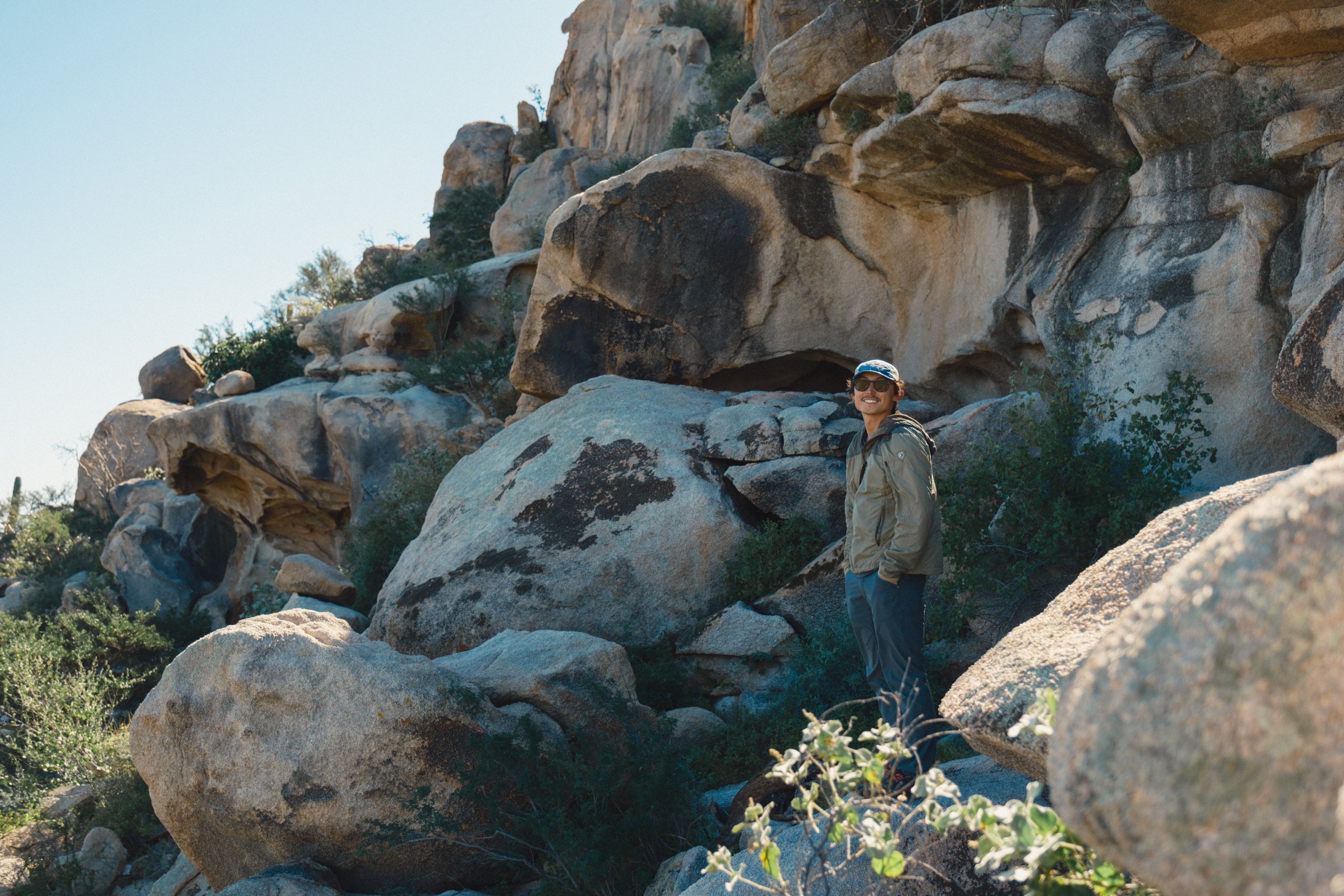
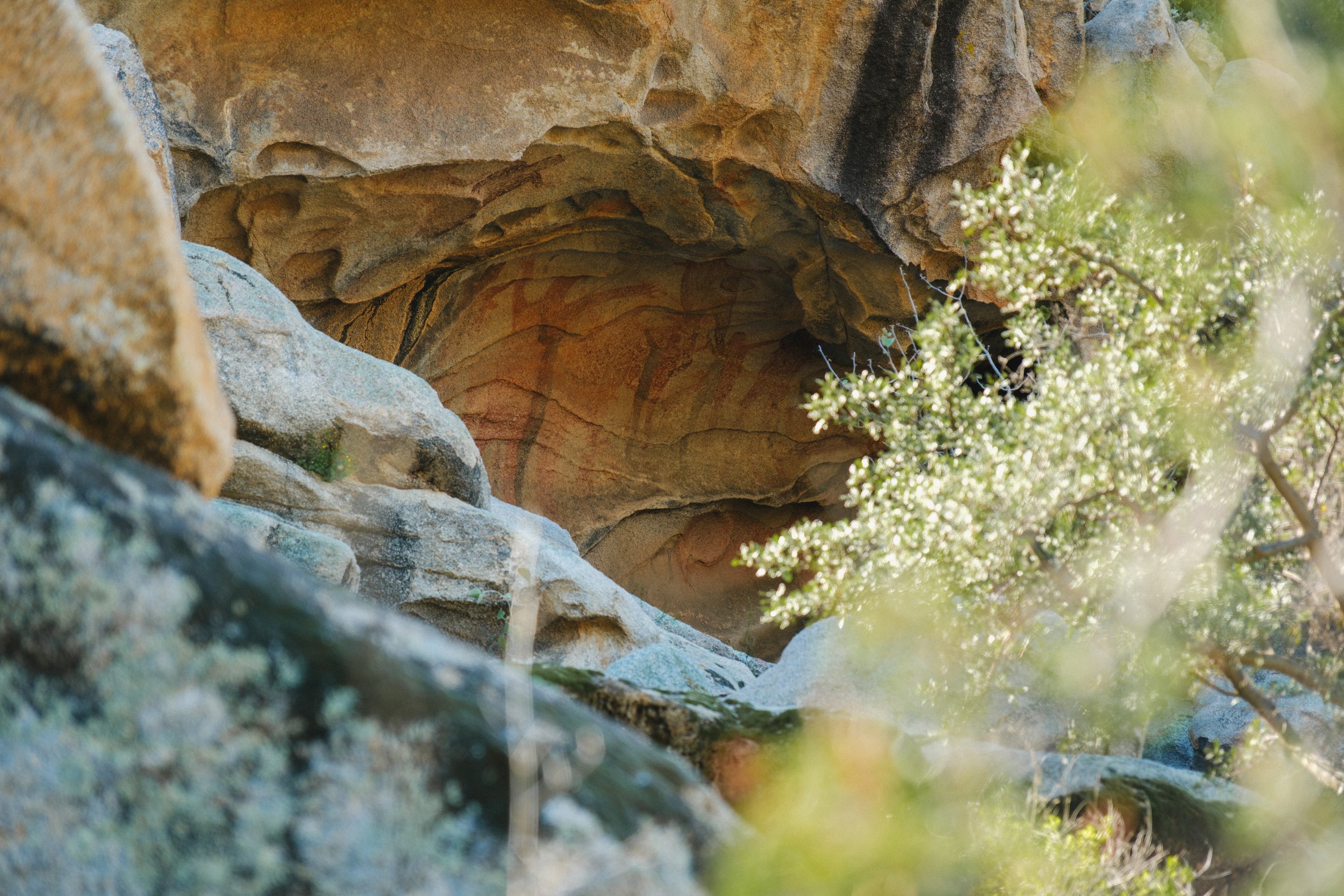
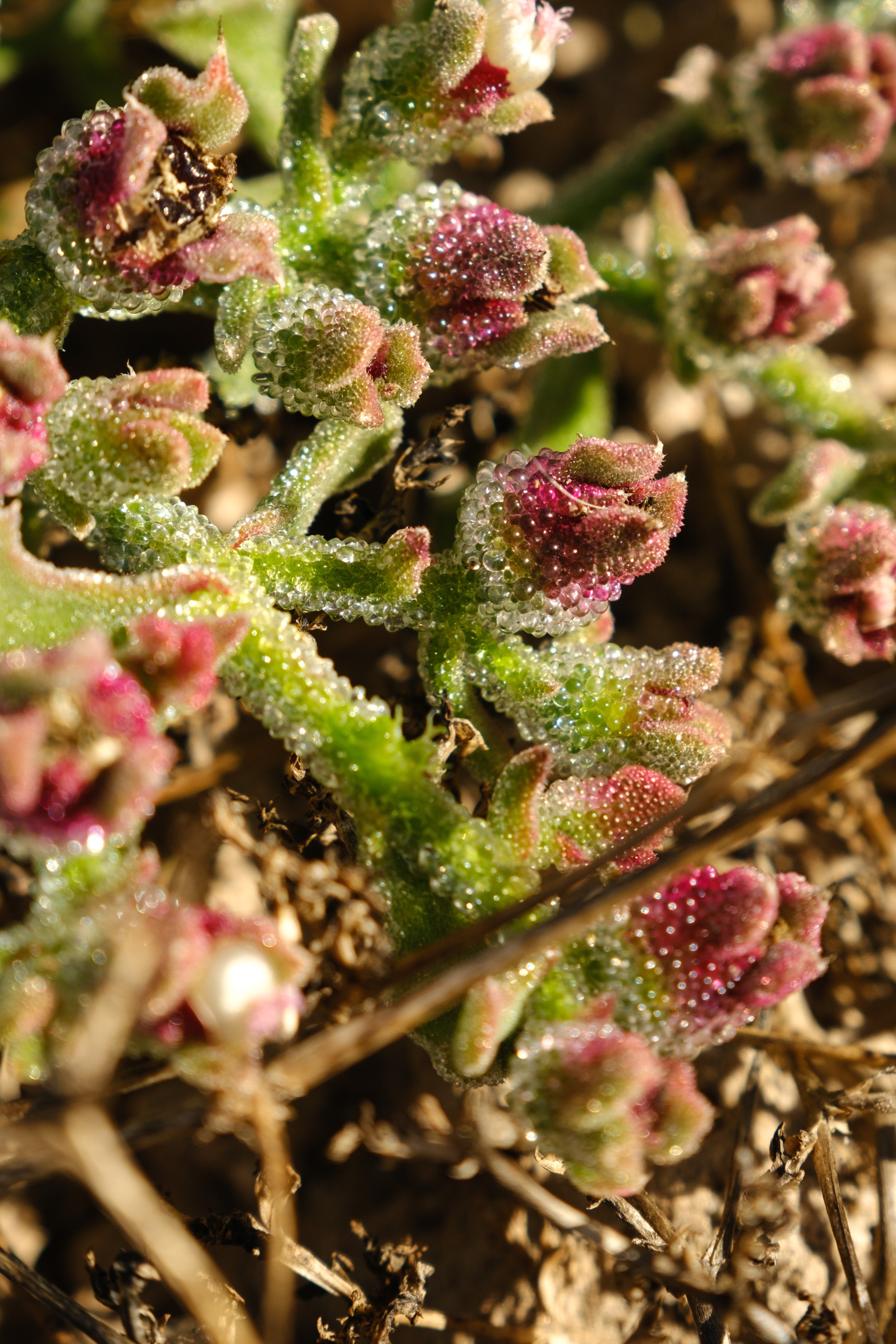
Something that never ceases to amaze us about Baja is just how dense the pictographs are. When we first started coming down here, we didn’t know that the area was so prolific for this type of prehistoric art. Baja is actually home to a UNESCO World Heritage site: Rock Paintings of the Sierra de San Francisco that we had the pleasure of visiting during our trip to Baja last year. Something that is notably different about the pictographs in Baja verses the ones that are more familiar to us in the states is the scale and use of just two colors, black and red. Though the people who made these disappeared, the art is thought to been created between 100 B.C.E. - 1300 C.E. It’s impossible to stand in front of these painting and not feel in complete awe. Art an the need to tell stories seems to be one of the few things that has the ability to stand the test of time.
Thanks so much for reaching, see you next week!
MAK
We’re immensely grateful to our sponsors for making our creative endeavors possible. Their unwavering support has played a crucial role in enabling us to bring captivating stories to life and share them with our audience. Without their generous contributions, we wouldn't have the necessary resources to embark on our journeys, capture breathtaking landscapes, and document compelling human experiences. Our sponsors' dedication to our vision and their commitment to promoting authentic storytelling in the digital age is truly commendable. Every step of the way, their belief in our work has fueled our passion and allowed us to continue creating meaningful stories. We owe our sponsors a profound debt of gratitude, as they’re essential partners in our mission to inspire.
Presenting Sponsors
We’ve now been living out of a flat-bed Four Wheel Camper for 5 years. FWC builds comfortable and durable campers that can fit on any truck. We can confidently say that our FWC is the most comfortable and livable rig we’ve had in all our years on the road! If you reach out to them, tell them MAK & Owen sent ya!
Power and power management are key to living and working full time from the road. Our mobile lives run on a Redarc Manager 30. It’s a state-of-the-art battery management system that charges and maintains auxiliary batteries by incorporating AC, DC and solar inputs. We’re not sure where we’d be without it!
Supporting Sponsors
When you go to travel through Mexico by car, you need Mexican car insurance. Baja Bound is our all time favorite car insurance. We’ve used Baja Bound for every single one of our trips south of the border. We’re proud to have them as a sponsor for Todo Bien!
If you’re looking to get into overland travel, inspiration, education, or gear Overland Expo is our favorite event series that happens all around the US every year. We love attending as there is always something new to learn, innovation to see, and incredible people to meet!
Our entire life is powered by Dakota Lithium. They make the best lithium batteries and are an essential part of our power system that enables us to work from the road! Dakota Lithium makes the biggest capacity batteries for the footprint which enables us to have twice the power in the same footprint.
Tires can be some of the best insurance when you are out in remote places. We love and trust our Toyo ATIII’s to get us in and out safely, no matter the terrain. They’re amazing in mud, moon dust, loose rocks, slick rock, you name it!




























